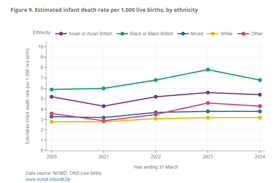Embedding virtual wards across an integrated care system means getting the support and buy-in from all parts of the system, said Rachel Marsh, deputy medical director, University Hospitals of Leicester Trust.
Sponsored by
Her organisation is building on the experience of successful virtual wards for COPD and covid step-down patients and has put together a delivery group that includes representation from acute, primary and community care.
“We have multiple virtual wards in development, including different respiratory pathways, frailty, palliative care, haematology and some surgical pathways,” she said.
“I think that has the advantage of getting keen physicians who have come forward with ideas but spreading that widely throughout the trust.”
Leicester, like many other areas, has extreme pressures on bed capacity, she added, and that encouraged people to think creatively about what could be done.
It’s also about ensuring you put the patient at the centre, and consider how virtual wards would work for each individual. “I’m a stroke consultant and have had lots of experience of early supported discharge over the last ten years, and that works well in people’s homes. But you have to have families and patients who are on board with this.”
As well as covid and COPD, Leicester also has some atrial fibrillation and diabetes virtual wards up and running, and is expanding to other clinical areas, said Dr Marsh. “For some of these wards, there’s a lot of technology, and a lot of it is remote and predominantly technology-driven. But for others, especially frailty and palliative care, there will need to be a lot of face-to-face involvement with patients.”
Workforce is the biggest challenge, she adds, which has meant looking innovatively at getting the people with the right skills around the patient. “For some of the wards we’ve had to think about starting a little bit smaller and then building up.”
Gathering evidence about patient outcomes will continue to be important, she says, as will learning from the good and from things that aren’t working as well.
Technology and its ability to communicate across different parts of the health and social care service will also be vital. “Virtual wards are an opportunity when working in our new ICS to actually push these things and say how can we actually work with the system.”
Finding ways to work across boundaries with primary, community and secondary care, and build those relationships will be a crucial part of making virtual wards work for all parts of the system.
An on-demand version of this webinar is available.
For those who had previously registered for the webinar, click here to view the on demand recording.
If you hadn’t previously registered, complete the form here HSJ webinar discussed if ICSs are ready to take virtual wards system-wide | HSJ Interactive | Health Service Journal. You will then be sent details on how to access the recording.
Taking virtual wards system-wide – is your ICS ready?
- 1
- 2
 Currently reading
Currently readingBuilding on the experience of successful virtual wards

























